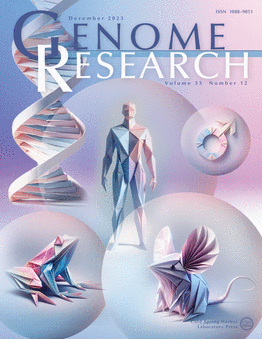综合单细胞多组分析揭示耐力运动对肌纤维型基因调控回路的调节作用
IF 6.2
2区 生物学
Q1 BIOCHEMISTRY & MOLECULAR BIOLOGY
引用次数: 0
摘要
耐力运动诱导多系统适应,提高表现,有益于健康。个体骨骼肌细胞类型中的基因调控回路反应是运动效果的关键介质,但尚未得到研究。我们使用同细胞RNA-seq/ATAC-seq多组分析绘制了肌肉对急性耐力运动的转录组、染色质和调控回路反应。在以70% VO2max进行40分钟自行车运动或仰卧休息40分钟之前和之后3.5小时,从股外侧肌样本中收集了包括14种细胞类型的37,154个细胞核,获得了高质量的数据。发现了共享的和细胞类型特异性的调控程序。每种细胞类型和肌纤维的差异基因表达和可接近位点在细胞核内很大程度上不同,在三种肌纤维类型(慢、快、中)和lumican (LUM)表达纤维脂肪祖细胞中观察到的调控事件最多。单细胞调控回路三联体重建(转录因子、染色质相互作用位点、调控基因)也发现了在三种肌肉纤维类型和表达lumm的纤维脂肪祖细胞中,运动调节的基因调控回路在很大程度上是不同的,涉及328个转录因子作用于染色质位点,调控2025个基因。该网络可访问的单细胞数据集和调节电路图可作为理解运动代谢和生理效应的分子基础的资源,并指导解释大块组织中的运动反应文献。本文章由计算机程序翻译,如有差异,请以英文原文为准。
Integrated single-cell multiome analysis reveals muscle fiber-type gene regulatory circuitry modulated by endurance exercise
Endurance exercise induces multi-system adaptations that improve performance and benefit health. Gene regulatory circuit responses within individual skeletal muscle cell types, which are key mediators of exercise effects, have not been studied. We mapped transcriptome, chromatin, and regulatory circuit responses to acute endurance exercise in muscle using same-cell RNA-seq/ATAC-seq multiome assay. High-quality data was obtained from 37,154 nuclei comprising 14 cell types in vastus lateralis samples collected before and 3.5 hours after either 40 min cycling exercise at 70% VO2max or 40 min supine rest. Both shared and cell type specific regulatory programs were identified. Differential gene expression and accessibility sites were largely distinct within nuclei for each cell type and muscle fiber, with the largest numbers of regulatory events observed in the three muscle fiber types (slow, fast, and intermediate) and lumican (LUM) expressing fibro-adipogenic progenitor cells. Single-cell regulatory circuit triad reconstruction (transcription factor, chromatin interaction site, regulated gene) also identified largely distinct gene regulatory circuits modulated by exercise in the three muscle fiber types and LUM-expressing fibro-adipogenic progenitor cells, involving a total of 328 transcription factors acting at chromatin sites regulating 2,025 genes. This web-accessible single-cell dataset and regulatory circuitry map serve as a resource for understanding the molecular underpinnings of the metabolic and physiological effects of exercise and to guide interpretation of the exercise response literature in bulk tissue.
求助全文
通过发布文献求助,成功后即可免费获取论文全文。
去求助
来源期刊

Genome research
生物-生化与分子生物学
CiteScore
12.40
自引率
1.40%
发文量
140
审稿时长
6 months
期刊介绍:
Launched in 1995, Genome Research is an international, continuously published, peer-reviewed journal that focuses on research that provides novel insights into the genome biology of all organisms, including advances in genomic medicine.
Among the topics considered by the journal are genome structure and function, comparative genomics, molecular evolution, genome-scale quantitative and population genetics, proteomics, epigenomics, and systems biology. The journal also features exciting gene discoveries and reports of cutting-edge computational biology and high-throughput methodologies.
New data in these areas are published as research papers, or methods and resource reports that provide novel information on technologies or tools that will be of interest to a broad readership. Complete data sets are presented electronically on the journal''s web site where appropriate. The journal also provides Reviews, Perspectives, and Insight/Outlook articles, which present commentary on the latest advances published both here and elsewhere, placing such progress in its broader biological context.
 求助内容:
求助内容: 应助结果提醒方式:
应助结果提醒方式:


